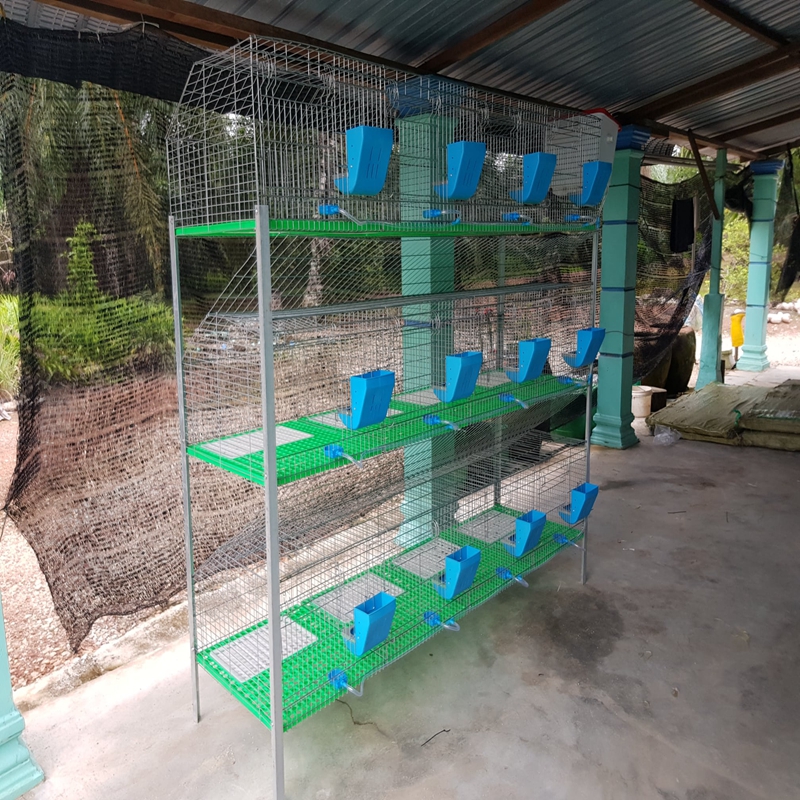Innovative Plastic Cages for Enhanced Chicken Farming Practices and Welfare
Nov . 06, 2024 14:04 Back to list
Innovative Plastic Cages for Enhanced Chicken Farming Practices and Welfare
The Use of Plastic Cages in Poultry Farming A Focus on Chickens
In the realm of modern agriculture, the management of livestock has evolved significantly, especially in poultry farming. Among the various innovations implemented to enhance productivity and animal welfare, the introduction of plastic cages has sparked considerable discussion. This article delves into the various aspects of using plastic cages for raising chickens, exploring their benefits and challenges while considering the future of poultry farming.
The Rise of Plastic Cages
Plastic cages have emerged as a popular alternative to traditional wire cages in chicken farming. Made from high-density polyethylene or polypropylene, these plastic enclosures offer a lightweight, durable, and easy-to-clean solution for housing chickens. Unlike their metal counterparts, plastic cages are less prone to rust and corrosion, which translates into lower maintenance costs over time. Moreover, their innovative design allows for optimal airflow and insulation, catering to the chickens' comfort in various weather conditions.
Benefits of Plastic Cages
One of the primary advantages of plastic cages is their contribution to improving hygiene standards within poultry production. The ease of cleaning is a significant factor, as bacteria and waste can be swiftly removed, reducing the risk of disease outbreaks. Chickens raised in cleaner environments tend to exhibit better health, productivity, and overall well-being. Furthermore, plastic cages often come with features that facilitate proper waste management, such as sloped floors that direct droppings away from the birds.
Another significant benefit is the weight of plastic cages. Being lighter than metal cages, they reduce the labor required for maintenance and repositioning, making it easier for farmers to manage large flocks. This ease of handling can lead to better workflows on farms, allowing poultry producers to focus more on the care and health of their birds rather than infrastructure concerns.
Additionally, plastic cages contribute to enhanced animal welfare. They can be designed to provide more space per bird compared to traditional cages, accommodating the natural behaviors of chickens, such as nesting, perching, and foraging. By fostering an environment that prioritizes animal well-being, farmers can improve not only the quality of the poultry they produce but also consumer perception of their practices.
chicken plastic cage

Challenges and Considerations
Despite their myriad advantages, the adoption of plastic cages in poultry farming is not without challenges. One of the primary concerns is the initial investment cost. High-quality plastic cages can be more expensive upfront compared to metal options. However, proponents argue that the long-term savings on maintenance and improved health outcomes for the birds can offset these initial costs.
Another challenge is the environmental impact associated with plastic production and disposal. While plastic cages tend to have a longer lifespan, they ultimately contribute to waste once they degrade or are no longer usable. The poultry industry faces increasing scrutiny over its environmental footprint, prompting the need for sustainable solutions that balance productivity with ecological responsibility. Exploring recyclable or biodegradable materials for cage production could be a potential pathway forward.
Moreover, the perception of animal welfare continues to evolve in the eyes of consumers. There is a growing call for transparency and responsible farming practices. As the industry shifts towards more humane methods of raising livestock, chicken farmers who adopt plastic cages must ensure they are accompanied by other welfare-oriented practices. This includes access to outdoor spaces, social interactions, and enrichment activities that promote the natural behavior of chickens.
The Future of Poultry Farming
Looking ahead, the future of poultry farming may hinge on the integration of various innovative approaches, including the use of plastic cages. As technological advancements continue to emerge, farmers have the opportunity to adopt more efficient, sustainable practices that cater to both productivity and animal welfare. Education and awareness will be key in facilitating this transition, enabling farmers to make informed decisions about their housing methods and overall care strategies.
In conclusion, while plastic cages present certain challenges, they also offer significant benefits that can enhance the quality of chicken farming. By prioritizing hygiene, ease of handling, and animal welfare, these modern enclosures may play a vital role in the future of poultry production. As the industry evolves, it will be essential for stakeholders to collaborate in addressing challenges and optimizing practices, ensuring that both chickens and farmers thrive in a sustainable environment.
-
Automatic Feeding Line System-Pan Feeder Nipple Drinker|Anping County Yize Metal Products Co., Ltd.
NewsJul.29,2025
-
Hot Sale 24 & 18 Door Rabbit Cages - Premium Breeding Solutions
NewsJul.25,2025
-
Automatic Feeding Line System Pan Feeder Nipple Drinker - Anping County Yize Metal Products Co., Ltd.
NewsJul.21,2025
-
Automatic Feeding Line System Pan Feeder Nipple Drinker - Anping County Yize Metal Products Co., Ltd.
NewsJul.21,2025
-
Automatic Feeding Line System - Anping Yize | Precision & Nipple
NewsJul.21,2025
-
Automatic Feeding Line System - Anping Yize | Precision & Nipple
NewsJul.21,2025






